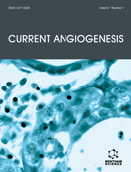Abstract
Background: Vascular smooth muscle cells (VSMCs) show eminently plasticity during physiological and pathological processes. VSMCs undergo from contractile phenotype to proliferative, matrigenic, inflammatory or osteogenic phenotype during the pathogenesis of hypertension, atherosclerosis, and vascular calcification etc.
Methods: Here we reviewed the research papers regarding to the respective effects of extracellular matrix (ECM) on VSMC phenotypic switching.
Results: The ECM including collagens, elastins, proteoglycans and glycoproteins etc, via complex protein-protein interaction, constitute a complicated microenvironment for VSMCs. Each component regulates VSMC phenotypic switching via various signaling pathways and cell surface receptor. On the other hand, ECM can be dynamic degraded or proteolysed by a variety of extracellular proteinases such as matrix metalloproteinases (MMPs) and a disintegrin and metalloprotease with thrombospondin motifs (ADAMTS). Thus, these extracellular proteinases are able to modulate VSMC phenotypes partially via degrading ECM. Moreover, the ECM-modulated VSMC phenotypic switching also plays a critical role in various vascular diseases, such as hypertension, atherosclerosis and vascular calcification.
Conclusion: Various ECM compositions including fibrous proteins, glycoproteins and proteoglycans exhibit the ability to modulate the VSMC phenotypic switching.
Keywords: Extracellular matrix, vascular smooth muscle cell, phenotypic switching, metalloproteinases.
Graphical Abstract
 29
29

